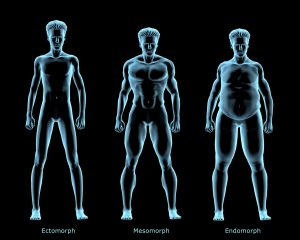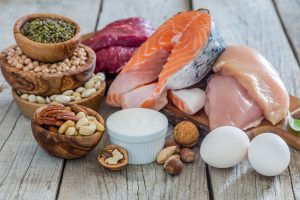Anyone can eat dirty and say they’re on a bulk, though the serious gainer, the one who doesn’t merely gravitate towards ‘a way of bulking‘ through default’ because it’s just easy, will be the one standing in the winner’s enclosure when it comes to cutting. In the bodybuilding world we bulk to increase muscle volume, and then we cut to draw out striations within the muscle fibres. This makes bodybuilders look huge and shredded.
Attitude is the key to success;
So if you’ve not been 100% happy with your bulk in the past or are struggling to work out why you do not see any real results, then pay attention now! I’ve spent years of my life surrounded by competitors in the bodybuilding world. I’ve witnessed first hand the successes and failures of those who have competed and learnt through observing and questioning their strategy’s. I have also read countless research papers to try and understand what is correct, and what is not. I understand what it takes to win at this quite frankly, shattering and exhausting sport. Bodybuilding relies on extreme dedication and commitment to succeed. In the end, it is your attitude that will determine whether you succeed or fail.
Lets first touch on egos:
Egos
By far the most common cause of not succeeding on a bulk!
The Walrus That Thinks They’re a Bear Ego
Most people when trying to bulk up will eat far too many calories, which will essentially translate to fat gain. This isn’t the best of looks and that aside, comes with other potentially disastrous implications. The biggest problem is that any excess calories that aren’t used for energy or removed from the body are stored in your fat cells. Excess fat is harder to burn than glucose as fat contains 9 calories per gram compared to 4 calories per gram of glucose. The excess fat you store will also make you feel lethargic, which is the most debilitating issue when trying to motivate yourself in the gym, your workouts will then suffer, and your results will be less than great!
If you really want to enter the winner’s enclosure when bulking, the key is to consume nutrient-rich foods that contain all of the major minerals that you won’t otherwise find in fatty foods; these are zinc, iodine, selenium copper, magnesium, calcium and iron. These minerals are found in abundance in dark green leafy vegetables, fish and red meat.
The Budgie That Thinks They’re a Bear Ego
Anyone that’s bulked will tell you ‘the hardest thing is the food’, which directly translates to ‘I struggle to find the time and effort to consume the number of calories needed each day’.
Adding muscle is hard to achieve, and dependent on your mindset, it could be considered the hardest part of any bulking plan. Those who have lost fat and then gained muscle will tell you how much harder it is to gain muscle compared to losing fat. Losing fat is easy right? You can just stop eating, and keep moving, but to add muscle you have to work. You have to lift heavy weights, consistently.
The budgie wants to get big and understands that they will need to ‘eat big to get big’. However, the budgie doesn’t know what eating big looks like. The budgie is not used to eating the crazy amount of calories required to bulk, and even though they may think they’re upping their calories, they are still nowhere near what is considered enough to make a difference
How to Bulk Based on Your Somatotype
We are all different, and so we should eat differently! There are three common body shapes called ‘somatotypes’.
Endomorph
Has wide hips, a thick rib cage with shorter than your average limbs. They are more prone to increasing weight and storing fat more easily than the other somatotypes. These guys are prone to also gaining fat when increasing muscle mass. The endomorph will struggle to strip fat, but because of the extra muscle that they carry, will have natural strength advantages over the other two somatotypes.
Ectomorph
Is thin and lean with a narrow waist, chest and shoulders. They may have a high forehead with a renounced chin and dazzling long, arms and legs. The ectomorph is more efficient at burning excess fat. Any extra muscle added, (although somewhat harder to achieve than the other somatotypes), will look more defined because of their smaller and lighter frame. Boasting a higher metabolism than the other two somatotypes, they are prone to weight loss. They should, therefore, consume over half of their calories from carbohydrates to prevent muscle catabolism.
Mesomorph
Has a well-built muscular frame, high metabolism and therefore able to burn fat more easily than the other two somatotypes. They are lean by nature and respond well to muscular development. Mesomorphs are strong and powerful and are likely to be sprint athletes, swimmers and bodybuilders. They have a greater advantage of strength and muscle gains over the other two somatotypes.
you should make sure you’re eating as per your somatotype to get the most out of your workouts and thus gains.
Based on your somatotype, you should consume the following macro split when on a bulk:
Mesomorph
Protein: 30%
Carbs: 40%
Fats: 30%
Ectomorph:
Protein: 25%
Carbs: 55%
Fats: 20%
Endomorph:
Protein: 35%
Carbs: 25%
Fats: 40%
Understanding Calories and Macros When on a Bulk
The number of calories you should consume is dependent on your somatotype.
Case study;
Let’s take a male mesomorph who weighs 80kg, who is 6ft tall and who wants to bulk up. He has an average metabolism with no thyroid problems. His basal metabolic rate (BMR), which is the number of calories he requires each day for normal bodily processes, plus any extra activities of daily living (ADL’s) totals around 2500 calories, based on the national average.
He performs one big weight lifting workout for 1 hour. This burns an extra 800 calories (taking into account the afterburn where the metabolism is burning extra calories for the next several hours).
This makes his daily burn 3300 calories for maintenance.
To add muscle mass, we would need to increase his calorie consumption to 3800 calories per training day, (500 calories extra to hit the surplus). This surplus accounts for natural thermal losses and will ensure calories in, exceeds calories out.
His daily burn is then;
3800 calories for training days
3000 calories for non-training days (minus the 800 calories as he is resting and not training)
So, based on the macro split, he would require the following calorie consumption on training days:
Protein: 3800 x .3 = 1140 calories
Carbs: 3800 x .4 = 1520 calories
Fats: 3800 x .3 = 1140 calories
Equivalent to:
– 9 chicken breasts or 375 grams of fresh mackerel fillets
Plus
– 100 grams of muesli, 500 grams of brown rice, 500 grams of spinach, 5 large tomatoes, 2 bananas, a handful of large strawberries
Plus
- 1 large avocado, a handful of seeds, olive oil dressing
Bulking Requires a Calorie Surplus
When you’re trying to increase mass, you need extra materials. For example, if you wanted to extend your house, you’d need more bricks! Well, the building blocks of muscle are proteins, made up of smaller molecules known as amino acids.
You should be consuming around 500 calories extra per day when on a bulk, on top of your daily burn to gain muscle mass. The calories from protein should be; 2.2 grams of protein per kg of body weight.
Excess Fat Should Be Avoided When Bulking
Adipose tissue is made up of fat cells that store not only lipids; but fat-soluble vitamins and hormones too, that would have been better circulating around the body to help with metabolic processes. Fat cells are much harder to break down than glucose as fats contain 9 calories per gram compared to 4 calories per gram of glucose.
Carbs When Bulking
– The ‘fluffy place.’
When we eat carbohydrates (carbs), they are broken down into smaller molecules, which are carried within the blood in the form of glucose, i.e. blood sugar. Carbs take around two hours to digest, and the energy gained will be fully depleted within 24 hours. During the two-hour digestive phase, your metabolism will be breaking down the pasta, or whatever food sources you’ve consumed into the usable energy, glucose.
– The ‘fluffier place.’
If you’ve been moving more than you’ve been consuming, you’re in a calorie deficit! In a calorie deficit, your blood sugars will be low. It is at this point when hormone-sensitive lipase is in abundance. Your body will break down fat stores for usable energy from an ester, that is released into the bloodstream called triacylglycerol.
– The FML ‘don’t go here place.’
Muscles predominantly consist of amino acids (the building blocks of protein), glycogen and water. It is when readily available glucose and fat stores become low, that our metabolism shifts, and enters a state of muscular catabolism. This is when we break down our muscle tissue for energy.
It is important to note, that there is a direct correlation between low blood sugar and low insulin levels, and as we know that insulin is proven to inhibit muscle protein breakdown, we can also reduce protein catabolism by preventing low blood sugars.
Point to note with carbs; if you feel yourself getting hungry, you are already entering muscle catabolism, which is the worst possible situation when trying to increase your muscle mass.
Dirty Bulk Vs Clean Bulk
Let’s get serious, you could consume the exact number of calories needed for hypertrophy, but if you’re not getting the correct number of macronutrients (macros) and micronutrients (micros) from your food, then you’re heading for disaster.
Macros are the three main food groups; protein, fats and carbohydrates. Other food groups include ‘milk and dairy’ and ‘fruit and vegetables’. Micros consist of two classes, which are vitamins and minerals.
The significant difference between vitamins and minerals is that vitamins are organic compounds that break down by heat, air and water, while minerals being inorganic, are not broken down by these elements.
Transportation, packing and storage of foods should be a factor worth considering then when selecting foods. This is because their goodness diminishes somewhat if not handled efficiently and correctly.
Fuelling yourself with foods packed with nutritional value is vital to reduce the risks of lethargy and chance of poor workouts.
So in summary, treat your body well and get better results from better quality fuel.
Stretching Can Increase Strength Gains
While on a bulk, excessive weightlifting places extra pressure on your musculoskeletal system. Injuries are common, yet prevention can be simple; the most common injuries are sprains where a ligament becomes overstretched or tears or a strain which is an overstretching or tearing of a muscle or tendon. Another reason to stretch is to reduce the effect of DOMS (Delayed Onset of Muscular Soreness).
Understanding the Value of Rest
Muscles grow during recovery, not during weight training. The pumped look you see is actually due to an increased amount of blood flowing through your muscles. This is your body’s natural way of bringing oxygen and nutrients to the muscle to aid in performance. Muscle protein synthesis should be greater than protein breakdown during a rest phase to enable growth.
Skipping Cardio Is a Big ‘no-no’ If You Want to Bulk Effectively
There is so much misinformation on the Internet about performing cardio when bulking. Many people are naive, and wrongly believe that you should avoid cardio of any sort when trying to gain muscle mass.
Performing a controlled cardiovascular exercise routine when bulking is a must if you want to end up in the winner’s enclosure. Here are a few of the most important benefits:
Cardio Can Increase Your Mood, and Give You a More Focused Mindset
- Getting out of breath before you’ve even started your workout is no way to live, even on a bulk! And will soon lead to feelings of low mood and sluggishness. Cardiovascular exercise releases endorphins (hormones), which gives a feeling of analgesia, a natural high. Cardiovascular exercise also strengthens the heart muscle, and so reduces feelings of lethargy. Feeling healthy can keep you more focused, as clarity is king when it comes to a winning mindset.
Cardio Increases Your Recovery Time
- During intense exercise, there’s often not enough oxygen delivered to your muscles for them to perform to their potential. You will, therefore, move into a state of anaerobic respiration where only around 5% energy is being utilised from glucose. You then have to endure a build-up of the muscles waste product, ‘lactic acid’. It is the lactic acid that causes soreness and stiffness in the muscles and is what causes that ‘burn’ feeling. Blood flow removes the lactic acid, which can reduce the ‘delayed onset of muscular soreness’, (DOMS) in the coming days. This is why we recommend controlled cardio following a weights session. It will remove the lactic acid before feelings of soreness and stiffness occur. This will prevent lethargy and promote recovery.
Cardio Helps Strip Excess Fat
Although you need to be in a calorie surplus to bulk and build muscle, you will likely also gain fat. Your body naturally uses more fat as fuel during lower intensity cardio than high intensity. To avoid excess fat gain, I recommend one of either two things:
- A controlled cardio routine at low intensity, for up to 30 minutes, three times per week. You should work at no more than 70% of your max heart rate (roughly calculated by 220bpm minus age). This will help strip excess fat calories and help maintain cardiovascular health.
- Incorporate three, 20 minute HIIT (high-intensity interval training) sessions into your plan each week. This option will be more effective at maintaining and improving cardiovascular fitness, but you will need to fuel your body mid-workout with an isotonic energy drink to avoid muscle catabolism.
Periodisation of Overtraining
There are two main types of overtraining:
- Localised; individual muscle or muscle group.
- Systemic; entire body.
Overtraining causes your body to excrete more nitrogen than what it has ingested, (negative nitrogen balance).
Your body produces excess cortisol (a hormone) in times of stress. It is this hormone, ‘cortisol’ that is responsible for the ‘fight or flight’ response. This is a natural defence mechanism which is in its own right a good thing. It is, however, this cortisol that can hinder protein synthesis and thus render muscular growth.
The effects of increased cortisol can make you depressed, and your muscles feel fatigued, weak and sore. When bulking, therefore, overtraining which causes cortisol levels to rise should be avoided.
Bulk’ periodisation should include cycling volume and intensity of various muscular movements over different time scales. The shorter usually up to 7 days is the ‘microcycle’, up to a few months is the ‘mesocycle’, and the entire training phase of your goal is known as the ‘macrocycle’, around 1 year.
We recommend when bulking that intense training should be over a shorter timescale and volume of exercises. The lighter, less intense and low-intensity workouts should be a greater volume and longer timescale.
A form or periodisation is ‘Overreaching’. Overreaching during the final stages of bodybuilding prep will gain big results. Periodisation is where mesocycles of around two weeks can interchange with normal training patterns.
To Summarise
So there you have it! Be mindful of your ego, eat clean, eat enough, and base your macros around your somatotype. Stretch, rest and include cardio, and you will be victorious in your bulk.
I look forward to welcoming you to the winner’s enclosure.





